.
![]()
Golden Triangle Special Economic Zone billboard, Laos. It's clear that it's the Chinese are the ones promoting this Golden Triangle SEZ between China, Laos, and Thailand. All contact information is in Chinese. Trade is one of the major reasons why China has been proactively investing and developing the northern region of Laos.: photo by Kaj17, 29 January 2013
![]()
Map showing location of the Golden Triangle Special Economic Zone (GT SEZ), Bokeo Province, Lao PDR: image via EIA
![]()
![]()
Caged bears in the the Golden Triangle Special Economic Zone, purportedly for eating:photo by EIA via The Guardian, 19 March 2015
![]()
Two sun bears (Helarctos malayanus) at the Vietnam Bear rescue centre in Tam Dao national park, Vietnam. The bear’s gall bladders are used in traditional Chinese medicine and although bile is milked from commercially farmed bears, wild bears are often taken to stock or restock these small farms. Bear meat, particularly the paws, is considered a culinary delicacy. Killing bears is illegal in all bear range countries but is largely uncontrolled. The species is extinct in Singapore and has possibly become extinct in Bangladesh and China. They are banned from international commercial trade: photo by Luong Thai Linh/EPA via the Guardian, 5 February 2015
![]()
A big cat skeleton -- allegedly a tiger -- in an aquarium of tiger bone wine: photo by EIA via The Guardian, 19 March 2015
![]()
![]()
Tiger (Panthera tigris). A Sumatran tiger named Dara, trapped by tiger poachers. Indonesian conservationists have found 120 traps set up by poachers to snare critically endangered Sumatran tigers in Kerinci Seblat national park, according to officials. Poaching is the greatest immediate threat to this endangered species, of which there are as few as 3,200 in the wild.According to Traffic, parts from a minimum of 1,590 tigers were seized between January 2000 and April 2014 – an average of two animals per week. Every part of the tiger — from whisker to tail — is traded on the black market. Tigers are mounted as trophies, skins worn as status symbols, and their parts used in traditional medicine, as tonics and folk remedies: photo by Kerinci Seblat National Park/AFP via The Guardian, 7 February 2015
![]()
'Massage' Parlor in Chinese Casino Concession. In the food court area of the Chinese casino concession area in Tonpheung Village: photo by Prince Roy.7 March 2010
![]()
An ivory bust of former Chinese leader Mao Zedung for sale in Guangzhou, China. Chinese demand for ivory is stripping Tanzania of its elephant population, photo by STR/EPA via The Guardian, 7 November 2014
![Stuffed tiger in Laos]()
![]()
Casino in Golden Triangle, Laos: photo by anacrisan, 4 October 2012
![]()
Dogbei Dogmeat Cold Noodles. Foodcourt at Tonpheung Village Chinese casino concession area: photo by Prince Roy, 7 March 2010
A Kings Romans Group promo: image via EIA
![]()
Chinese Hotel/Casino in Tonpheung Village. Wonder what it'll look like when it's finished: photo by Prince Roy.7 March 2010
![]()
Laos Vegas (Casino): photo by JP Newell, 22 December 2014
![]()
Terkesan berikutnya dengan #bokeo adalah kondisi pasar lokalnya. Bersih dan teratur. Belanjapun terasa nyaman. #laos: image via Vanda Lengkong @vhalhen123, 18 July 2014 Lao People's Democratic Republic
![]()
![]()
Menu at a restaurant in the special zone:photo by EIA via The Guardian, 19 March 2015
![]()
A female Amur Tiger, Iris, licks its 7-week-old cub during one of their first walks in an open-air cage at the Royev Ruchey zoo in Krasnoyarsk, Russia. The Amur Tiger is an endangered species: photo by Ilya Naymushin/Reuters, 2011
![]()
Vladimir Putin fixes a GPS-Argos satellite transmitter on to a tiger on 31 August 31, 2008: photo by Alexey Druzhinin/AFP via the Guardian, 14 October 2014
![]()
![]()
real and imaginary skins. store selling skins both real and imaginary (tiger with a wolf's tail} and fur clothing and hats. Shigatse, Tibet.: photo by cam17, 3 September 2013
![]()
Tiger skin for sale, Yanji, Jilin, China. On open display in a herbalist shop in downtown Yanji. The manager said it came from Changbaishan. Seems shocking but I sent these photos to the Environmental Investigation Agency and the wildlife trade monitoring network Traffic, and they agree that all the skins shown are fake - what a relief. Traffic say such fakes are very common. EIA said: "We’ve had a good look through and the good news is that all the skins appear to be fakes. It is quite common for skins to be painted in this way to look like tiger and leopard and we have come across quite a lot in China. It does of course indicate that there is perhaps demand for the real thing. One way to check if a skin is real or fake is to brush back the fur to see if the markings go right down the shaft of the hair. Texture of fur is also important and a gradual whitening of the fur under the belly of the animal. Some of the skins suggest the whitening has been attempted, but the actual markings (too uniform) are a giveaway. Also, the shape of the head, ears and tail where present, indicate they are not the skins of big cats.": photo by Michael Rank, 9 September 2010
![]()
Thousands of elephants are still being killed for their ivory: photo by Sami Al Tokhais via The Guardian, 21 Match 2015
![]()
The Burmese star tortoise (Geochelone platynota), is a critically endangered species native to Burma. It is used for meat and traditional medicines in Asia and is highly sought after for the international pet trade, with collectors in Europe and North America willing to pay thousands of dollars for an individual. There are concerns that there may now be no viable wild populations. Commercial harvest and trade of this species is illegal under Burmese law, although export of captive specimens is permitted from one facility within the country, which also contributes to a future release program: photo by Minden Pictures/Corbis via the Guardian, 5 February 2015
![]()
Tiger [bone] wine, for sale in foreign tourists' souvenir shop, Rason, DPRK [North Korea]: photo by Michael Rank, 7 September 2010
Psychology studies suggest rising wealth means more jerks in S.F. #UC Berkeley #PaulPiff: image via GamerGate Trends @Gamergatolizer, 29 January 2015
![]()
Tiger skins seized from a poacher on the outskirts of Delhi: photo by Pallava Bagla/Corbis Sygma
![]()
Phet -- the Indochinese Tiger. Phet is a victim of illegal wildlife trade. Her mother was killed by poachers in February 2000. Her two brothers too did not survive. By the time she was just four days old, Phet had already been sold on four times by illegal traders. Capture stress, malnutrition, ringworm infestation and diarrhea had taken their toll on Phet. She was in extremely poor condition and had lost most of her hair when she was rescued. Phet has made a full recovery thanks to CWI's Tiger Adoption Programme. She will depend on human care for the rest of her life: photo by Mikhail Esteves, 15 October, 2007
![]()
Captured tiger cub, Thailand. This poor guy was at the "Tiger Temple" in Kanchanaburi province, Thailand. I don't recommend this trip at all. Although it sounds nice touching the tigers and taking their pictures it's not as cool as you may think.The big tigers look as if on drugs and they just lie there sleeping all day. It looks sad and somehow you feel that these animals are used commercially just to bring money to the monks. Some other people in this region started capturing/buying/getting tigers and now they are happy to present those in cages for tourists -- for money of course. It's very different than in a Zoo, at least in a Zoo they have a relatively big area for the tigers to move and are being taken care by professionals. Here are approx 15 tigers in chains -- the big ones sleeping all the time (strange) and tons of people visiting every day putting money in this monastery. I understand it's hot and the tigers have to do this every day, probably are very bored, but not a single tiger moving from approx 10 adults? Second, you are not allowed to take pictures of the big tigers (Imagine my shock to hear that after traveling so much) . Some volunteer will take your hand and bring you behind the sleeping tigers and another volunteer will take your camera and take some snapshots of you touching the tiger. You do this for approx 5 big sleeping tigers, 2 photos per each tiger (one landscape and one portrait). Or you can buy the "Special Photo" treatment and they take the sleeping tiger head and put it in your lap and somebody takes a photo of that. My photos are with the tiger cubs, these have a different treatment than the adults. At least these seem like normal "alive" animals -- but still in chains.: photo by photo by Pavel, 9 September 2009
![]()
Tiger Temple, Kanchanaburi province, Thailand: photo by brett marlow, 22 February 2008
![]()
Captured Tiger Cub, Thailand: photo by Pavel, 9 September 2009
![]()
The tigers and me. At a zoo of sorts in Thailand -- it was billed as a Crocodile Farm, but there were two gorgeous tigers and some elephants that made the crocodiles seem boring: photo by Roberta Taylor, 9 May 2008.
![]()
Beautiful [Captive tiger, Thailand]: photo by Roberta Taylor, 9 May 2008
![]()
![]()
![]()
![]()
Baby Tiger (Tiger Temple, Kanchanaburi Province, Thailand): photo by rogoyski, 3 January 2008
![]()
![]()
![]()
Tigers, Samphran Elephant Ground and Zoo, Ban Phaeo, Samut Sakran, Thailand: photo by Sophia Lucero, 3 June 2011
![]()
outfits: photo by John Henry Mostyn, 3 June 2005
![]()
Pingyao Bicycle. Ancient City of Pingyao, Shanxi, China.: photo by ccdoh1, 16 April 2012
![]()
Epic Fireworks -- Hide It From the Wife [Batley, UK]: photo by Todd Lappin, 31 October 2007
![]()
![]()
Untitled [Brick Lane, Shoreditch, London]: photo by Nick Anderson, 31 August 2008
![]()
The Way of the Tiger [Landen, Vlaams Brabant, Belgium]: photo by Yves Salmon, 24 December 2007habeebee, 24 July 2012
![]()
tiger, tiger [Psiri, Athens, Attica]: photo by René Mouton, 26 January 2015
![]()
Food for Thought. Tigerskin performer in discussion over lunch at event in Sydney: photo by Louis Allen, 22 August 2010
![]()
Tiger Rag. MSU museum's annual Darwin Discovery Day [East Lansing, Michigan]: photo by Billl Harrison, 8 February 2015
![]()
Found photo. I am thinking hotel. California? Nevada? [c. 1970s]: photo by habeebee, 24 July 2012
![]()
Cans and Tiger Skin Cap. Seen at London's Trafalgar Square.: photo by Garry Knight, 30 August 2014
Mari kita jaga mereka #HarimauSumateraTWNC #HarimauSumatera #TamblingWildLife #SUMATRANTIGER: image via nansusanti1 @ nansusanti1, 2 March 2015
![Embedded image permalink]()
sayangi fauna #TamblingWildLife #HarimauSumatera #SumatranTiger: image via Tulusma Hutasoit @TulusmaH, 2 March 2015
Save them! #HarimauSumateraTWNC #HarimauSumatera #TamblingWildLife#SumatranTiger: image via ahmadhai @hadi_AhmadAshor, 2 March 2015
menyayangi binatang liar #TamblingWildLife #HarimauSumatera #SumatranTiger: image via Dwi Rochadi, 2 March 2015
Save Sumatera Tigers... #TamblingWildLife #HarimauSumatera #SumatranTiger: image via feny lim @fenylimfeny, 2 March 2015
#Deforestation Drives 80% Of #Indonesia's Emissions, Making It World's 5th Biggest Emitter: image via Assaad Razzouk @Assaad Razzouk, 8 May 2015
![http://upload.wikimedia.org/wikipedia/commons/2/23/Tiger_2.jpg]()
Tiger (Panthera tigris), Frankfurt Zoo: photo by Moni Sertel, 15 April 2009

Golden Triangle Special Economic Zone billboard, Laos. It's clear that it's the Chinese are the ones promoting this Golden Triangle SEZ between China, Laos, and Thailand. All contact information is in Chinese. Trade is one of the major reasons why China has been proactively investing and developing the northern region of Laos.: photo by Kaj17, 29 January 2013
I...Casino Infernale
High-end Laos resort serves up illegal wildlife for Chinese tourists: Shocking undercover investigation finds restaurants offering live bear cubs ‘to eat on request’ washed down with tiger bone wine in the ‘lawless playground’ of Laos’ Golden Triangle Special Economic Zone: Jeremy Hance for The Guardian, 19 March 2015 (updated 20 March 2015)
High-end Laos resort serves up illegal wildlife for Chinese tourists: Shocking undercover investigation finds restaurants offering live bear cubs ‘to eat on request’ washed down with tiger bone wine in the ‘lawless playground’ of Laos’ Golden Triangle Special Economic Zone: Jeremy Hance for The Guardian, 19 March 2015 (updated 20 March 2015)
American social psychologist Paul Piff has built a career on studying how wealth and privilege affects moral behaviour. Through a wide variety of methods -- including rigged Monopoly games and monitoring luxury car drivers -- Piff has produced an intriguing, though controversial, collection of evidence that wealth and status makes a person more likely to act badly.
interesting...verrrrry interesting #paul piff: image via homsectual sapien @atkittypause, 9 March 2014
The rich act more selfishly, break more rules, feel more entitled, and display less empathy and compassion, according to Piff and his colleague’s findings. Most of his research has occurred near his place of employment, the University of California, Berkeley, but Piff may want to consider conducting his next experiment in Laos’ Golden Triangle Special Economic Zone.
Species loss and "intelligent life": image via Paul Piff @pkpiff. 29 March 2015
Lying on the banks of the Mekong River, the Golden Triangle Special Economic Zone is a large resort city catering especially to Chinese tourists and run by the Hong Kong-based Kings Romans Group. The luxury casino provides the main draw, as gambling is illegal in China; but the resort also includes a shooting range, more than 70 shops and restaurants, gardens, spas, and a bustling trade in endangered species’ parts, at least according to a new report by the Environment Investigation Agency (EIA) titled Sin City.

Map showing location of the Golden Triangle Special Economic Zone (GT SEZ), Bokeo Province, Lao PDR: image via EIA
The report calls the zone a “lawless playground” with “not even a pretence of enforcement”. Indeed, even in a region of the world where wildlife trafficking is rampant and consumption of endangered species common, the report’s findings are shocking.

Chinese Casino in Tonpheung village, Bokeo, Laos: photo by Prince Roy, 8 March 2010
Eat a bear, drink a tiger
At the God of Fortune restaurant, for example, undercover investigators viewed a live, caged bear cub and python -– both of which were “available to eat on request,” according to the report. The menu also openly included such fare as bear paw, monitor lizards, pangolins, geckos, and a variety of snakes and turtles. And one could wash all that down with a jar of purported tiger bone wine.
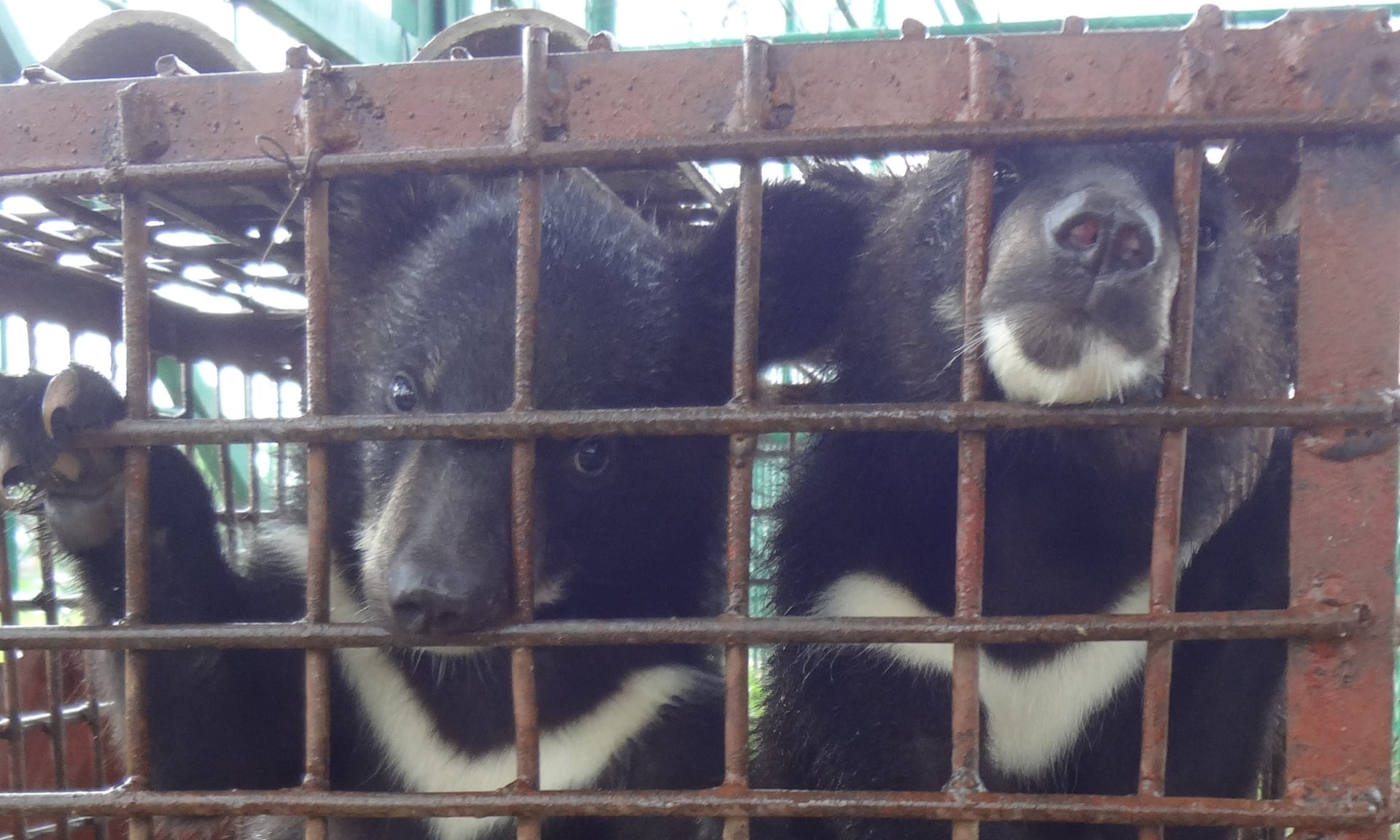
Caged bears in the the Golden Triangle Special Economic Zone, purportedly for eating:photo by EIA via The Guardian, 19 March 2015
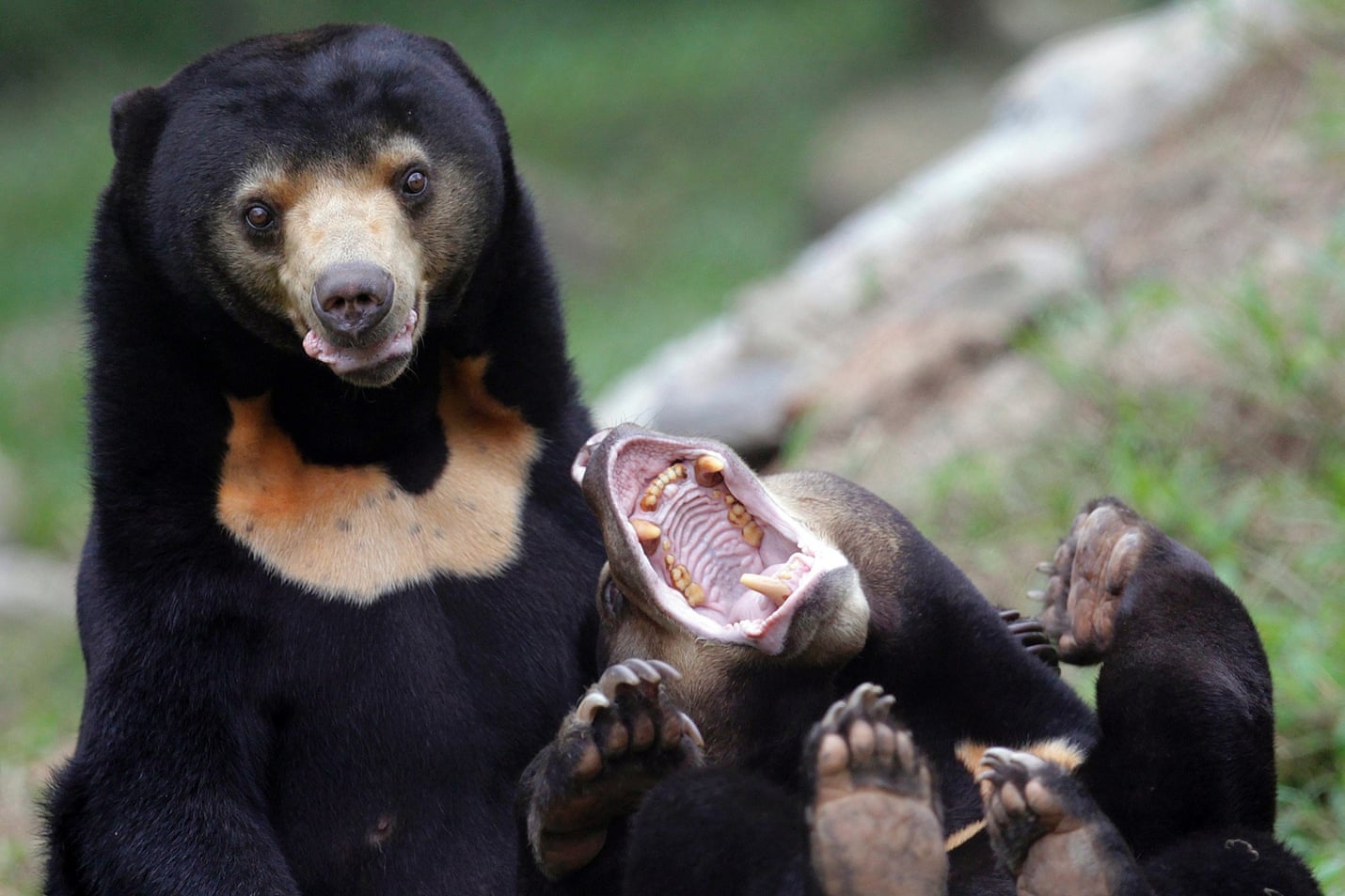
Two sun bears (Helarctos malayanus) at the Vietnam Bear rescue centre in Tam Dao national park, Vietnam. The bear’s gall bladders are used in traditional Chinese medicine and although bile is milked from commercially farmed bears, wild bears are often taken to stock or restock these small farms. Bear meat, particularly the paws, is considered a culinary delicacy. Killing bears is illegal in all bear range countries but is largely uncontrolled. The species is extinct in Singapore and has possibly become extinct in Bangladesh and China. They are banned from international commercial trade: photo by Luong Thai Linh/EPA via the Guardian, 5 February 2015
At another restaurant, Fantasy Garrett, one can order something dubbed “sauté tiger meat”. The restaurant also displayed a large aquarium, but not filled with fish. Inside, was a fully mounted tiger skeleton with a sign advertising the restaurant’s tiger wine, where crushed tiger bones are added or steeped in rice wine.
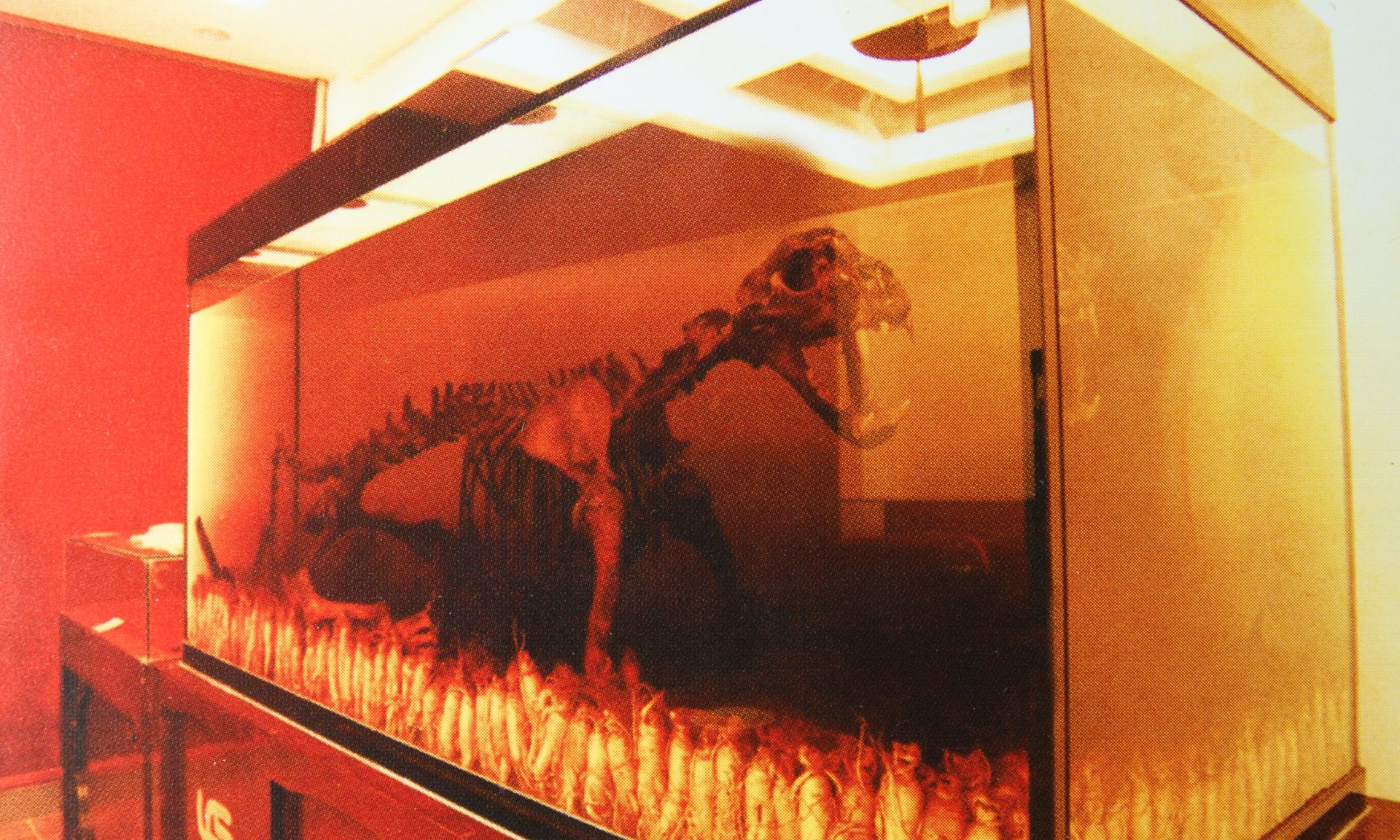
A big cat skeleton -- allegedly a tiger -- in an aquarium of tiger bone wine: photo by EIA via The Guardian, 19 March 2015
One could be sceptical, as tiger wine is sometimes faked.

A caged tiger bred for slaughter in the Golden Triangle Special Economic Zone:photo by EIA via The Guardian, 19 March 2015
But the Golden Triangle Special Economic Zone actually has the tigers to back up their claims of being able to consume and drink the great cats. Undercover investigators with the EIA and the Education for Nature Vietnam (ENV), visited a tiger and bear farm inside the zone housing a total of 38 Asiatic bears -– for eating –- and 35 tigers. In the case of the tigers, this captive population -– destined to be killed, defleshed, and mixed with rice wine -– represents a larger population than all of Laos’ wild tigers. The country is thought to be home to only a single population, no larger than 20 mature individuals.
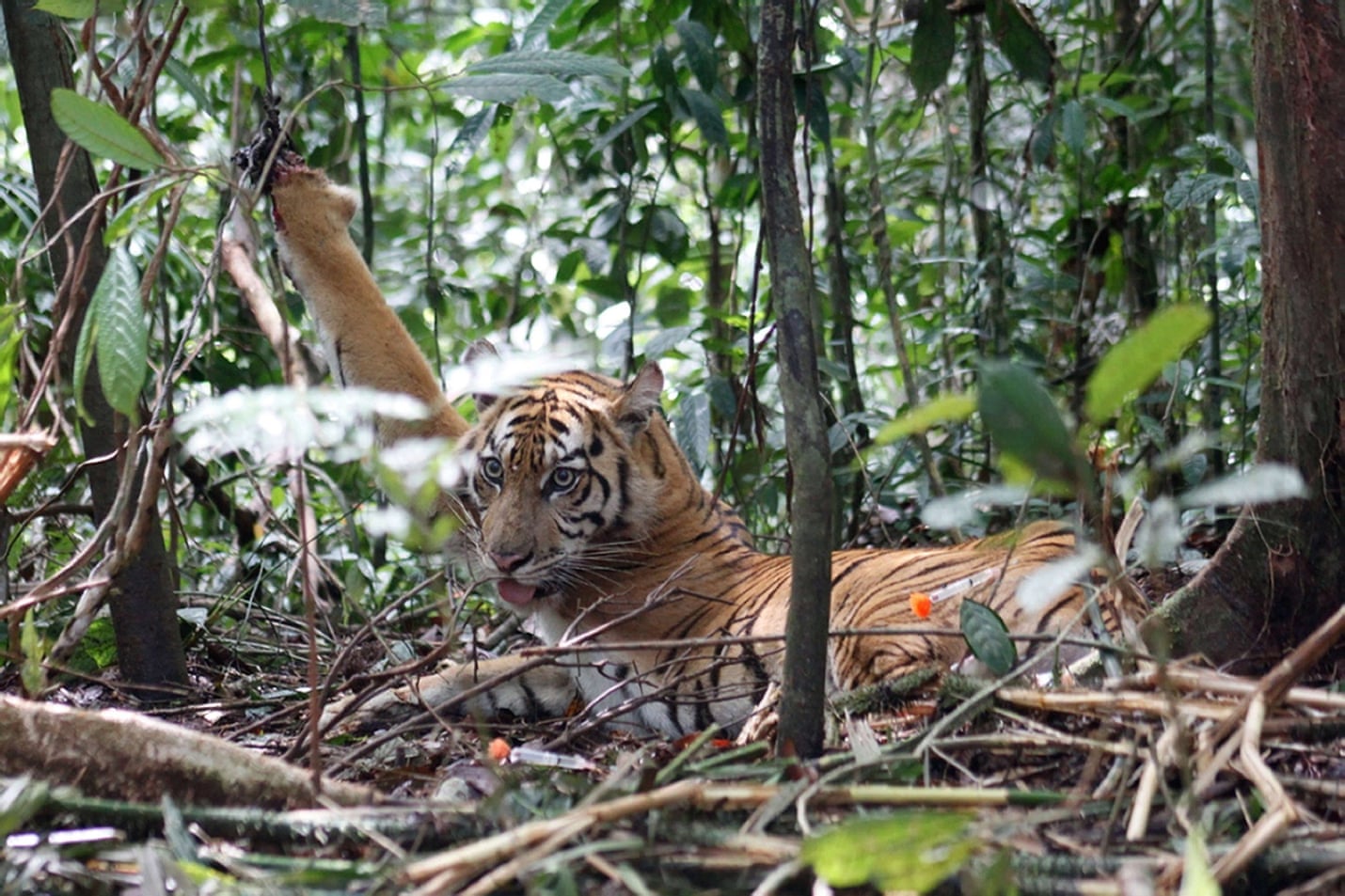
Tiger (Panthera tigris). A Sumatran tiger named Dara, trapped by tiger poachers. Indonesian conservationists have found 120 traps set up by poachers to snare critically endangered Sumatran tigers in Kerinci Seblat national park, according to officials. Poaching is the greatest immediate threat to this endangered species, of which there are as few as 3,200 in the wild.According to Traffic, parts from a minimum of 1,590 tigers were seized between January 2000 and April 2014 – an average of two animals per week. Every part of the tiger — from whisker to tail — is traded on the black market. Tigers are mounted as trophies, skins worn as status symbols, and their parts used in traditional medicine, as tonics and folk remedies: photo by Kerinci Seblat National Park/AFP via The Guardian, 7 February 2015
The tiger-bear farm also plans to significantly expand operations.
“The keeper told investigators the plan is to acquire a total of 50 [female tigers] for breeding, with the aim of producing 500 tigers within three years and up to 1,000 tigers in the long term,” reads the report.
Across the zone’s shops, investigators found stuffed tigers and tiger skins, rhino horn shavings, beads and carvings from the helmeted hornbill, and a single leopard skin.

'Massage' Parlor in Chinese Casino Concession. In the food court area of the Chinese casino concession area in Tonpheung Village: photo by Prince Roy.7 March 2010
Even the casino brandishes wildlife products, namely ivory. Investigators found “carved whole tusks, bangles, beaded bracelets, pendants and other trinkets” openly-displayed where gamblers hoped for luck.

An ivory bust of former Chinese leader Mao Zedung for sale in Guangzhou, China. Chinese demand for ivory is stripping Tanzania of its elephant population, photo by STR/EPA via The Guardian, 7 November 2014
Echoing Piff’s research, Debbie Banks, the Head of the EIA’s Tiger Campaign, said “wealth and status are definitely the drivers of demand”.

Stuffed tiger in Laos: photo courtesy of EIA via Mongabay.com, 20 March 2015
Experts are increasingly calling attention to the role of status in the illegal wildlife trade in this part of the world. As China -- and much of East Asia -- has experienced a runaway economic boom, snorting powdered rhino horn, displaying tiger skins, or purchasing ivory has become a way to flex one’s power and wealth.
“Stuffed tigers, tiger skins, carved ivory and helmeted hornbill casques are luxury products, purchased for vanity and increasingly as assets, just like gold or jade. The tiger bone wine that is openly for sale is marketed to men as a ‘strengthening tonic,’” Banks said, adding that “the open trade makes it feel like an illegal wildlife supermarket, where you can just browse, pick and choose without any fear of enforcement.”

Casino in Golden Triangle, Laos: photo by anacrisan, 4 October 2012
Golden Triangle: Drugs to wildlife trafficking
The Golden Triangle is a region in Southeast Asia criss-crossing three countries (Laos, Burma, and Thailand) and known for its massive opium and heroin production with a number of feuding drug lords to go with it. But the region has also become a tourist draw.

Dogbei Dogmeat Cold Noodles. Foodcourt at Tonpheung Village Chinese casino concession area: photo by Prince Roy, 7 March 2010
To take advantage of the region’s growing popularity, in 2007 Kings Romans Group entered into a 99-year lease for 10,000 hectares in the region. The company was granted 3,000 of these hectares as a duty-free zone, dubbed the Golden Triangle Special Economic Zone.
A Kings Romans Group promo: image via EIA
“The stated aim of the agreement is to attract foreign investment in trade and tourism to drive local economic growth and alleviate poverty,” reads the EIA report.

Chinese Hotel/Casino in Tonpheung Village. Wonder what it'll look like when it's finished: photo by Prince Roy.7 March 2010
Just a two-hour drive from China, tourists don’t have to feel like they’ve left home. Signs are in Mandarin, yuan is the main currency, and most workers are Chinese, according to the EIA. The place even runs on Beijing time.
The tax-free zone has also enjoyed political patronage from Laos. Both the president and prime minister of Laos have visited along with the local governor.
“The Chinese businesses and consumers are exploiting weak enforcement in Laos, but the Laos government can’t pretend they are ignorant of what is going on,” said Banks.
And the EIA report that one of the major reasons why this border town has become a wildlife trafficking haven is Laos’ lax laws -– and little enforcement even for what is on the books.

Laos Vegas (Casino): photo by JP Newell, 22 December 2014
Legal confusion
Laos’ 2007 Wildlife and Aquatic Law prohibits the use of some animals, such as tigers, elephants, rhinos, and bears. However, there is a loophole: one can use these animals so long as it has government permission. Furthermore, captive bred animals can be traded so long as they are at least second generation. But this requires registration with Laos’ government, something that the undercover investigators found was lacking in some of the zone.
The 2007 wildlife law, though, also bars government employees from either running a wildlife business or taking a share from one. This could be problematic, given that the government of Laos is also said to have a 20% financial stake in the Golden Triangle Special Economic Zone, further entangling domestic politicians with the resort.
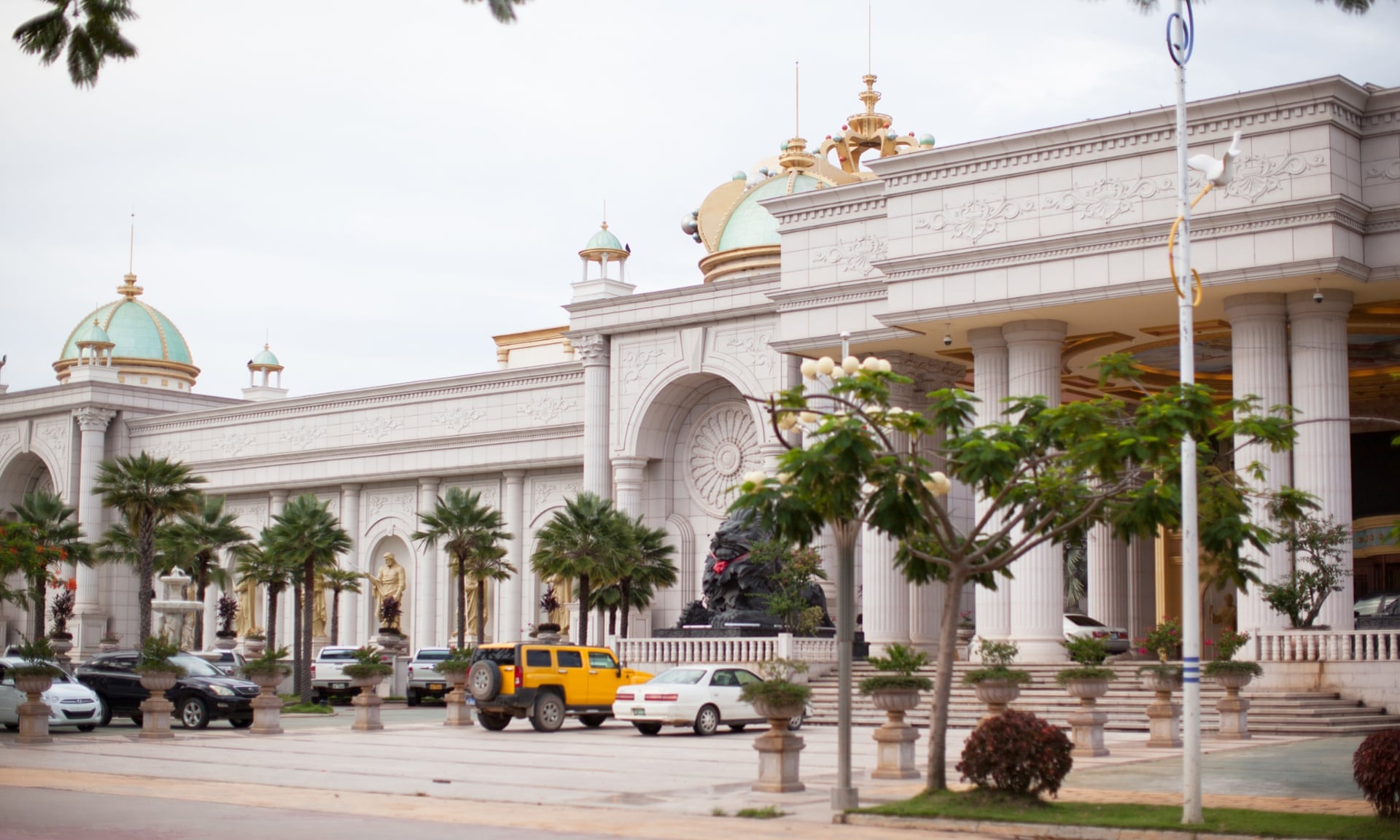
Kings Roman Casino, the top draw to the special zone:photo by EIA via The Guardian, 19 March 2015
But Laos has international obligations as well. The country has been a signatory of Cites since 2004, making it illegal to export or import wild specimens (or their parts) of many of the species found in the Golden Triangle Special Economic Zone.
Most of the wildlife for sale at the [Golden Triangle Special Economic Zone] has been obtained in contravention of Cites,” argues the EIA report.
Banks said that “on paper, Laos authorities could walk into the [Golden Triangle Special Economic Zone], seize, arrest, prosecute and launch investigations into the criminals controlling the trade.”
Terkesan berikutnya dengan #bokeo adalah kondisi pasar lokalnya. Bersih dan teratur. Belanjapun terasa nyaman. #laos: image via Vanda Lengkong @vhalhen123, 18 July 2014 Lao People's Democratic Republic
But no one is expecting a crackdown anytime soon.
“The track record of investigators and prosecutors elsewhere in the country to date suggests that is unlikely at the best of times, and would be a real challenge given the [political] connection,” noted Banks.
In order for the situation to change, Banks said action has to “come from the top”. She recommended “a clear message and direction from the prime minister to establish a special task force of investigators and prosecutors dedicated to wildlife crime. The law must also be strengthened, including revisions to end the breeding of tigers and trade in farmed tiger parts and products.”
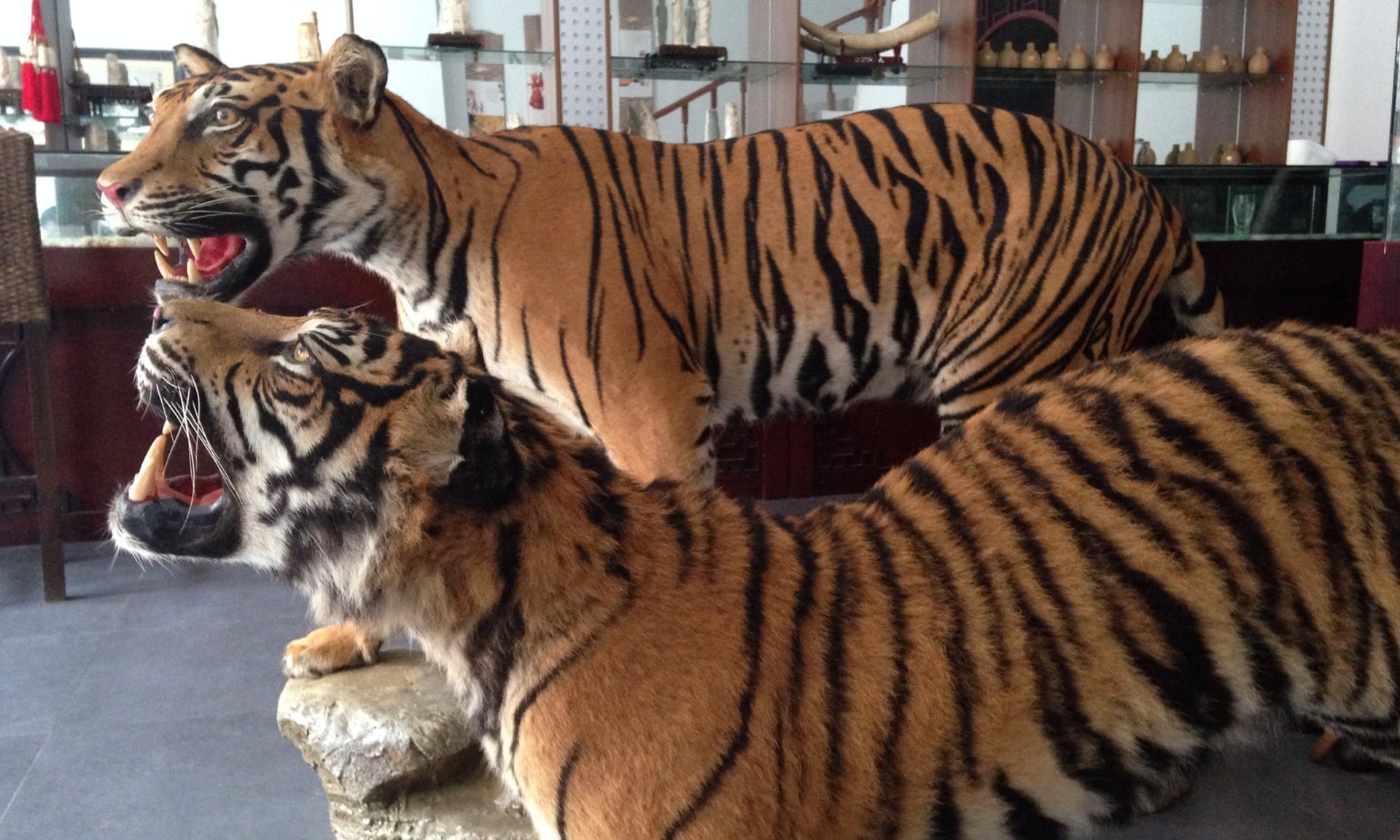
Stuffed tigers for sale at the Golden Triangle Special Economic Zone:photo by EIA via The Guardian, 19 March 2015
But Laos is not the only country on the hook, according to the report. China also needs to act, given that the special economic zone is run by a Chinese company, visited by Chinese tourists, and made to resemble China as much as possible.
And the Golden Triangle Special Economic Zone is not an aberration. There are also a number of other border towns with similar wildlife markets, also seemingly meant for wealthy Chinese tourists.
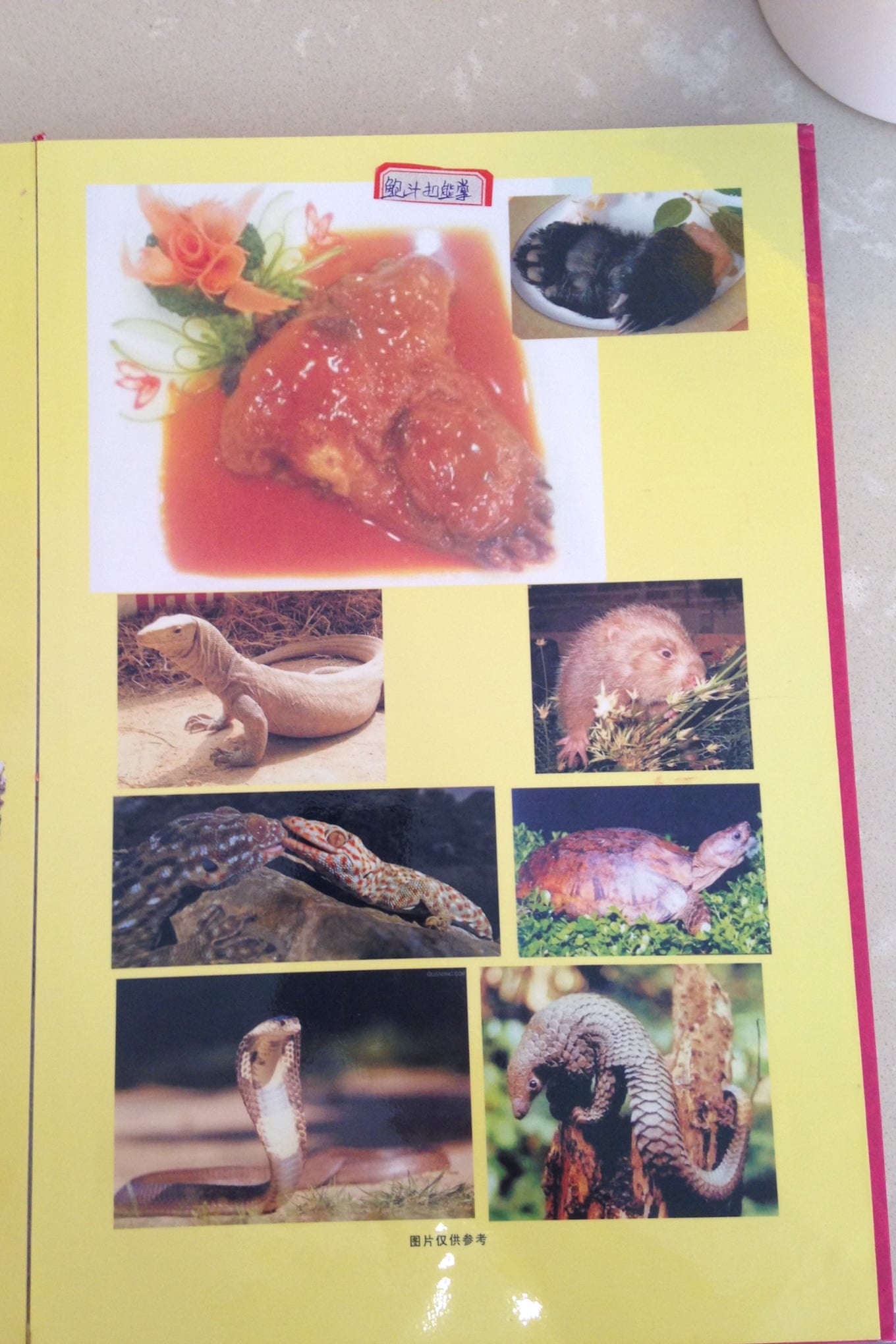
Menu at a restaurant in the special zone:photo by EIA via The Guardian, 19 March 2015
“There needs to be greater investment [by China] in intelligence-led enforcement to pursue the Chinese businesses and individuals who are running operations at the [Golden Triangle Special Economic Zone]... These shouldn’t be periodic operations that are co-ordinated once a year, but full-time, multi-agency operations,” said Banks. “If any country can put the resources into these specialised investigations, it is China.”

A female Amur Tiger, Iris, licks its 7-week-old cub during one of their first walks in an open-air cage at the Royev Ruchey zoo in Krasnoyarsk, Russia. The Amur Tiger is an endangered species: photo by Ilya Naymushin/Reuters, 2011
The profile of illegal wildlife trafficking has risen in the media and international politics in recent years, especially given the worsening poaching crisis of elephants and rhinos in Africa. The US government has issued new regulations on wildlife crime and launched new partnerships to combat the epidemic abroad, including funding. In the UK, Prince William has been passionately vocal on the subject, and last year, London hosted the first ever high-level meeting on wildlife trafficking. Finally, Interpol, the world’s police organisation, has launched an initiative to combat wildlife crime.
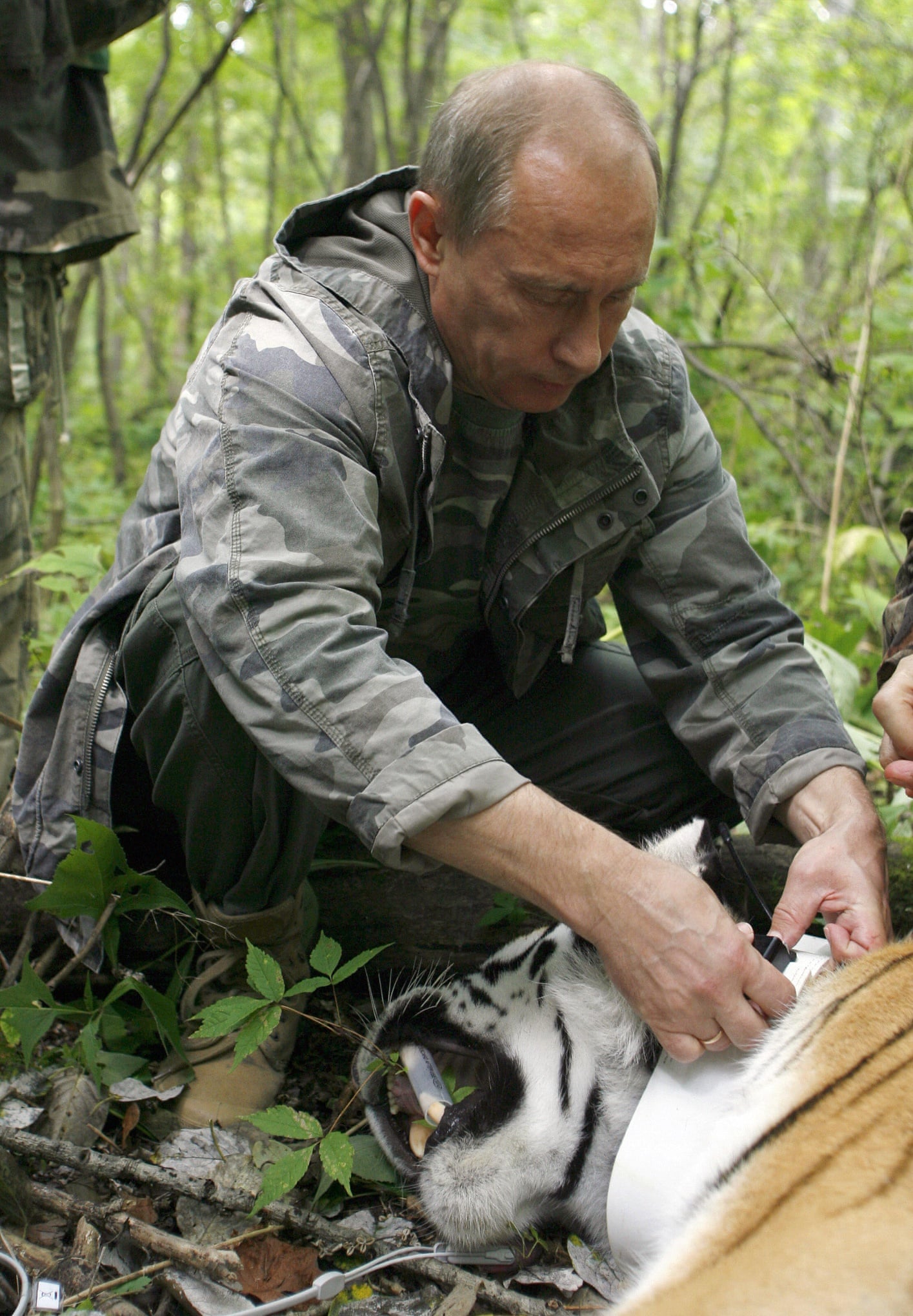
Vladimir Putin fixes a GPS-Argos satellite transmitter on to a tiger on 31 August 31, 2008: photo by Alexey Druzhinin/AFP via the Guardian, 14 October 2014
Yet, Banks, said the actions by the international community still amount to “tip-toeing around.”
“International organised wildlife crime is not a new or emerging threat, the role of serious and organised criminal networks controlling illegal wildlife trade has been well documented for over 15 years,” said Banks, who argued that “it’s time to ramp up the pressure for faster action and the international community should not shy away from calling for trade suspensions under Cites.”

'Massage' Parlor in Chinese Casino Concession. In the food court area of the Chinese casino concession area in Tonpheung Village: photo by Prince Roy.7 March 2010
Moral conundrums
But even if governments step up the fight against wildlife trafficking, there is still the problem of seemingly insatiable demand in the region. A demand so great that today China has more tigers in captive farms -– bred solely for killing -– than there are wild tigers on the planet: around 5,000 versus 3,200.

real and imaginary skins. store selling skins both real and imaginary (tiger with a wolf's tail} and fur clothing and hats. Shigatse, Tibet.: photo by cam17, 3 September 2013
“Promises to end illegal tiger trade are empty unless the law and policy in China is changed to end domestic trade in all tiger parts and products, and destroy stockpiles of tiger parts, including captive bred tiger parts,” said Banks, who argues that this trade is only fuelling poaching of wild tigers and other big cats as substitutes.

Tiger skin for sale, Yanji, Jilin, China. On open display in a herbalist shop in downtown Yanji. The manager said it came from Changbaishan. Seems shocking but I sent these photos to the Environmental Investigation Agency and the wildlife trade monitoring network Traffic, and they agree that all the skins shown are fake - what a relief. Traffic say such fakes are very common. EIA said: "We’ve had a good look through and the good news is that all the skins appear to be fakes. It is quite common for skins to be painted in this way to look like tiger and leopard and we have come across quite a lot in China. It does of course indicate that there is perhaps demand for the real thing. One way to check if a skin is real or fake is to brush back the fur to see if the markings go right down the shaft of the hair. Texture of fur is also important and a gradual whitening of the fur under the belly of the animal. Some of the skins suggest the whitening has been attempted, but the actual markings (too uniform) are a giveaway. Also, the shape of the head, ears and tail where present, indicate they are not the skins of big cats.": photo by Michael Rank, 9 September 2010
But it’s hardly just tigers. Experts estimate that somewhere between 22,000-35,000 elephants were slaughtered annually for their tusks in Africa in the last few years. Also, four of the world’s six rhino species are on the precipice of extinction, pushed, in part, by current or historic demand for their horn.

Thousands of elephants are still being killed for their ivory: photo by Sami Al Tokhais via The Guardian, 21 Match 2015
Indeed, ecosystems in Asia are literally being emptied of turtles, snakes, frogs, mammals, and even birds to feed demand for luxury foods, traditional medicine, and the newest pet craze, creating what’s been dubbed “empty forests” syndrome.
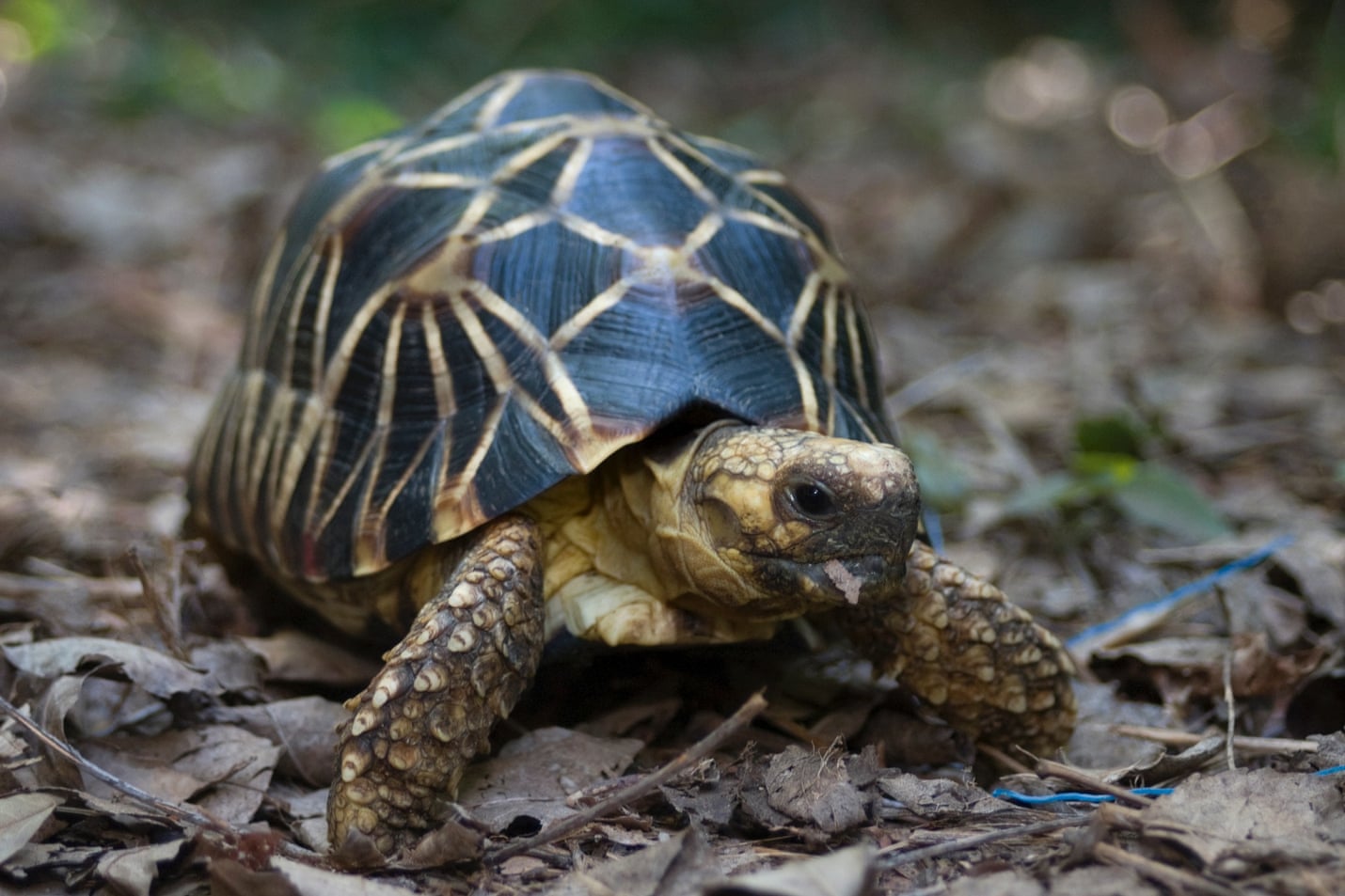
The Burmese star tortoise (Geochelone platynota), is a critically endangered species native to Burma. It is used for meat and traditional medicines in Asia and is highly sought after for the international pet trade, with collectors in Europe and North America willing to pay thousands of dollars for an individual. There are concerns that there may now be no viable wild populations. Commercial harvest and trade of this species is illegal under Burmese law, although export of captive specimens is permitted from one facility within the country, which also contributes to a future release program: photo by Minden Pictures/Corbis via the Guardian, 5 February 2015
While poor people certainly do consume forest animals too -– especially in forest-dependent communities -– many of those in Asia’s black markets are actually going to rising middle and upper classes, i.e. those who can afford such seeming luxury.

Tiger [bone] wine, for sale in foreign tourists' souvenir shop, Rason, DPRK [North Korea]: photo by Michael Rank, 7 September 2010
“What we’ve been finding across dozens of studies and thousands of participants across [the US] is that as a person’s levels of wealth increase, their feelings of compassion and empathy go down, and their feelings of entitlement, of deservingness, and their ideology of self-interest increases,” said Piff in a 2013 TED Talk. “In surveys, we found that it’s actually wealthier individuals who are more likely to moralise greed being good, and that the pursuit of self-interest is favourable and moral."
Psychology studies suggest rising wealth means more jerks in S.F. #UC Berkeley #PaulPiff: image via GamerGate Trends @Gamergatolizer, 29 January 2015
Piff has not studied whether wealth decreases compassion for non-humans, though it’s not a big stretch to assume it would. On the bright side, Piff has also found that change is possible and such behaviours are never fixed.
“In fact, we’ve been finding in our own laboratory research that small psychological interventions, small changes to people’s values, small nudges in certain directions, can restore levels of egalitarianism and empathy,” he said.
Calvin got it right. #CalvinAndHobbes #awe #astronomy #stargazing: image via Paul Piff @pkpiff. 29 March 2015
A number of campaigns are now targeting people across East Asia with those psychological nudges through advertisements and celebrities. They hope to undercut the social prestige of displaying a tiger skin or eating bear paw or ordering pangolin soup. While social change is usually not rapid, it must come fast if it’s to be in time to save Asia’s vanishing natural heritage.
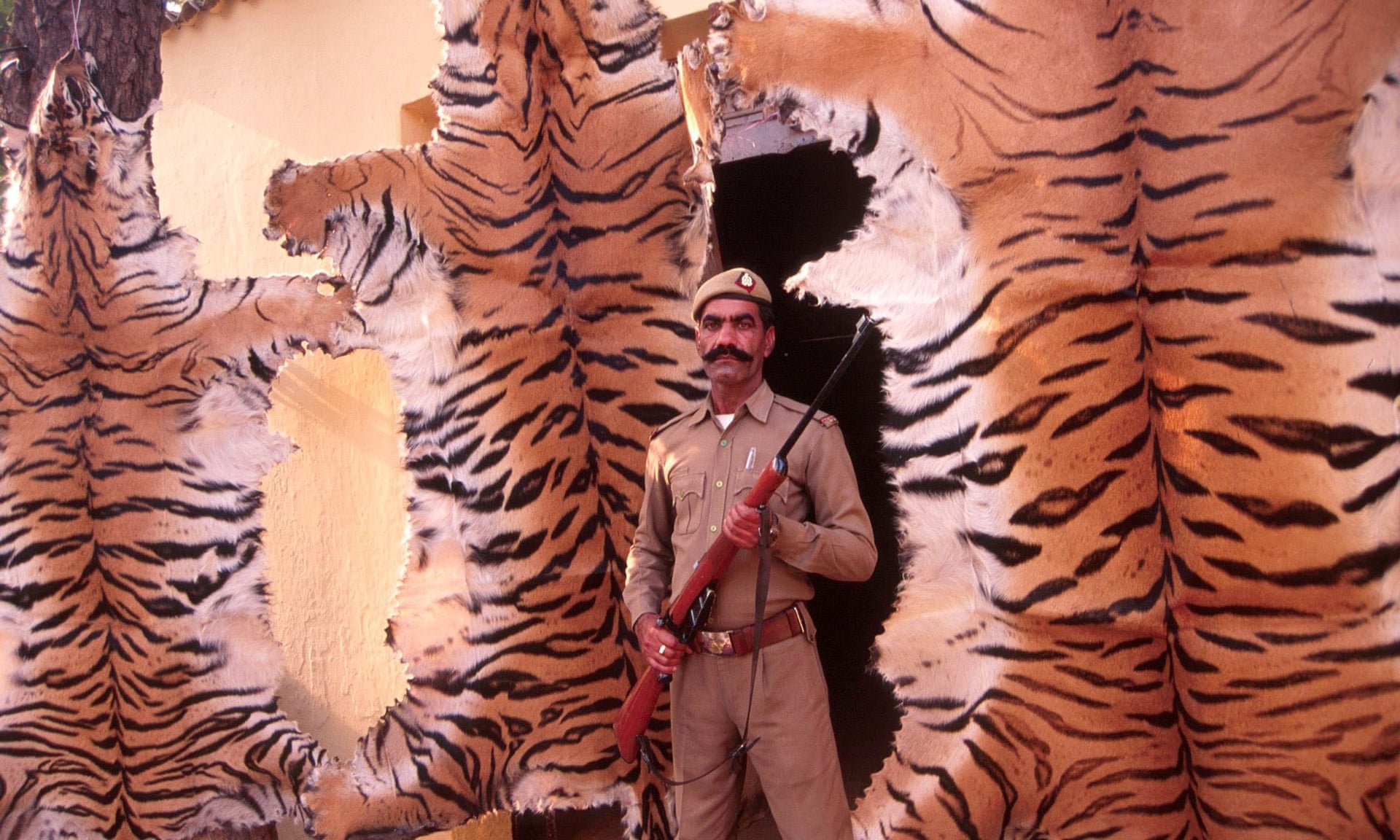
Tiger skins seized from a poacher on the outskirts of Delhi: photo by Pallava Bagla/Corbis Sygma
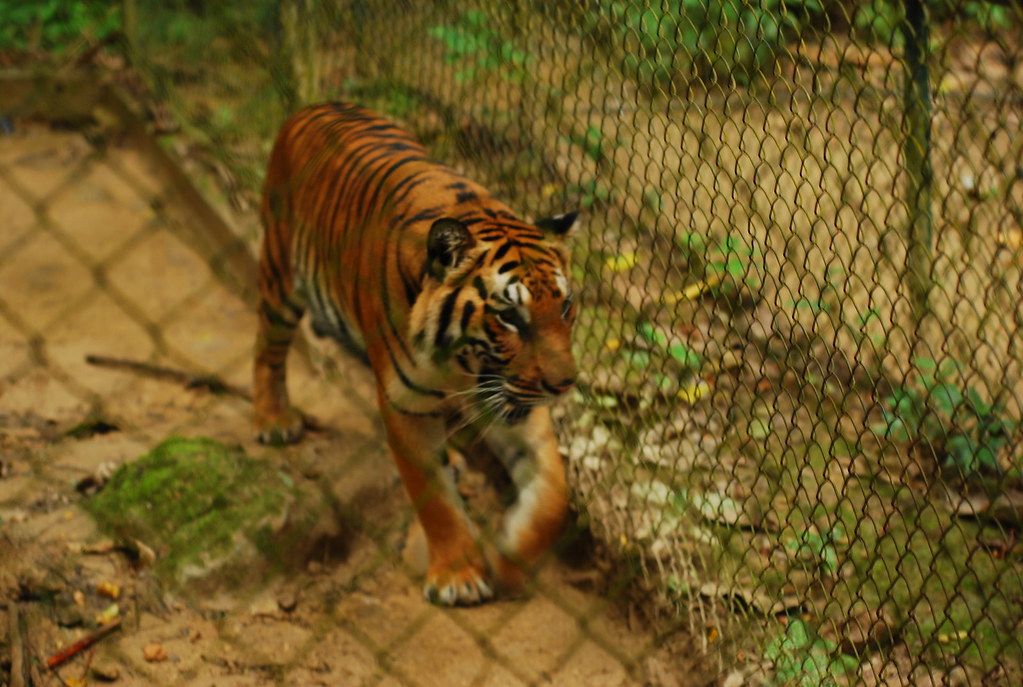
Phet -- the Indochinese Tiger. Phet is a victim of illegal wildlife trade. Her mother was killed by poachers in February 2000. Her two brothers too did not survive. By the time she was just four days old, Phet had already been sold on four times by illegal traders. Capture stress, malnutrition, ringworm infestation and diarrhea had taken their toll on Phet. She was in extremely poor condition and had lost most of her hair when she was rescued. Phet has made a full recovery thanks to CWI's Tiger Adoption Programme. She will depend on human care for the rest of her life: photo by Mikhail Esteves, 15 October, 2007
II...The tigers and me
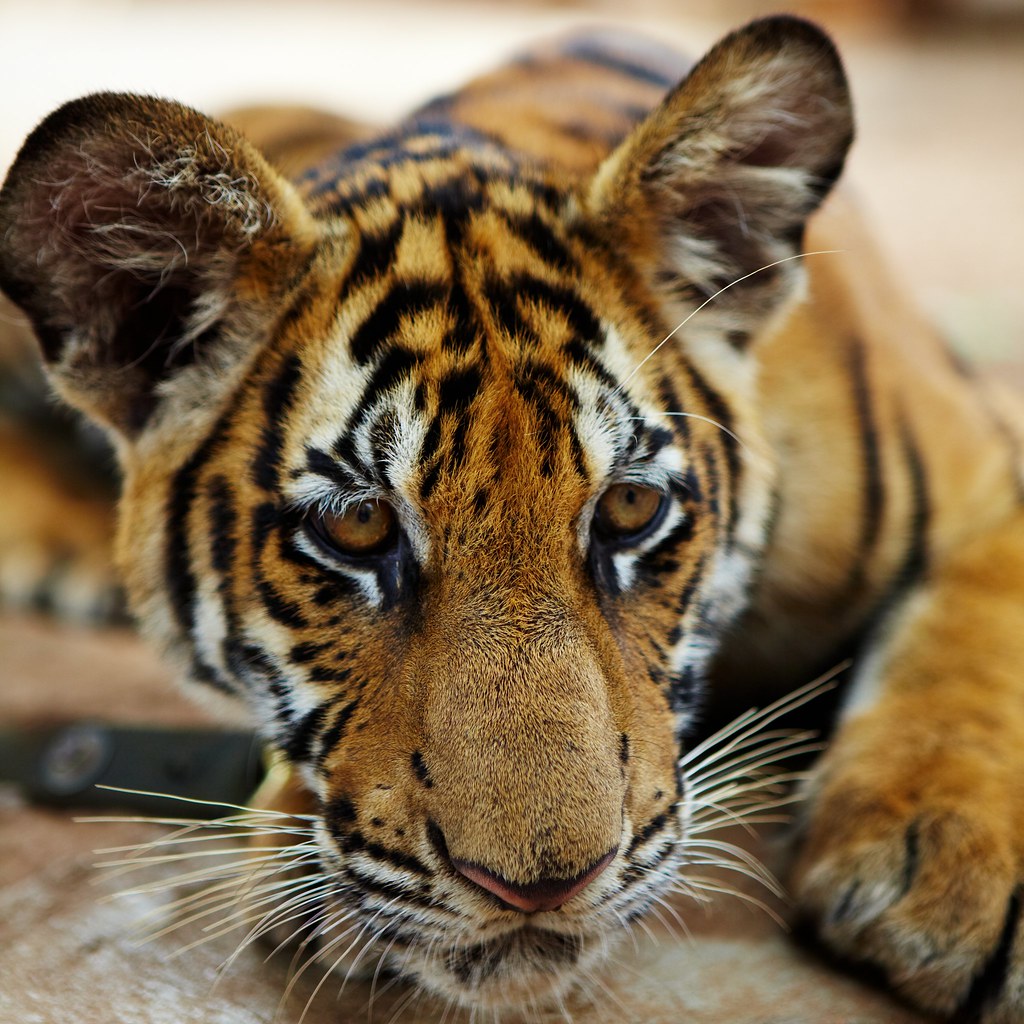
Captured tiger cub, Thailand. This poor guy was at the "Tiger Temple" in Kanchanaburi province, Thailand. I don't recommend this trip at all. Although it sounds nice touching the tigers and taking their pictures it's not as cool as you may think.The big tigers look as if on drugs and they just lie there sleeping all day. It looks sad and somehow you feel that these animals are used commercially just to bring money to the monks. Some other people in this region started capturing/buying/getting tigers and now they are happy to present those in cages for tourists -- for money of course. It's very different than in a Zoo, at least in a Zoo they have a relatively big area for the tigers to move and are being taken care by professionals. Here are approx 15 tigers in chains -- the big ones sleeping all the time (strange) and tons of people visiting every day putting money in this monastery. I understand it's hot and the tigers have to do this every day, probably are very bored, but not a single tiger moving from approx 10 adults? Second, you are not allowed to take pictures of the big tigers (Imagine my shock to hear that after traveling so much) . Some volunteer will take your hand and bring you behind the sleeping tigers and another volunteer will take your camera and take some snapshots of you touching the tiger. You do this for approx 5 big sleeping tigers, 2 photos per each tiger (one landscape and one portrait). Or you can buy the "Special Photo" treatment and they take the sleeping tiger head and put it in your lap and somebody takes a photo of that. My photos are with the tiger cubs, these have a different treatment than the adults. At least these seem like normal "alive" animals -- but still in chains.: photo by photo by Pavel, 9 September 2009

Tiger Temple, Kanchanaburi province, Thailand: photo by brett marlow, 22 February 2008
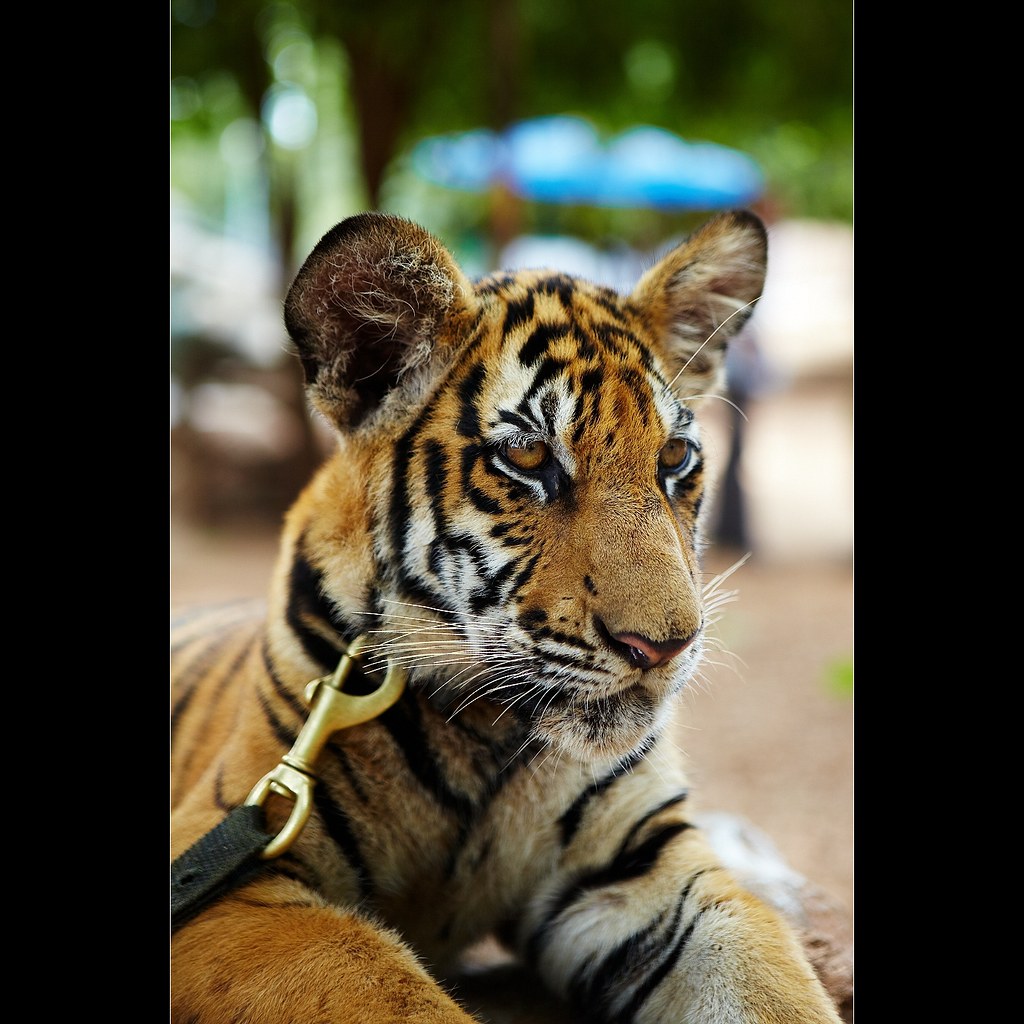
Captured Tiger Cub, Thailand: photo by Pavel, 9 September 2009
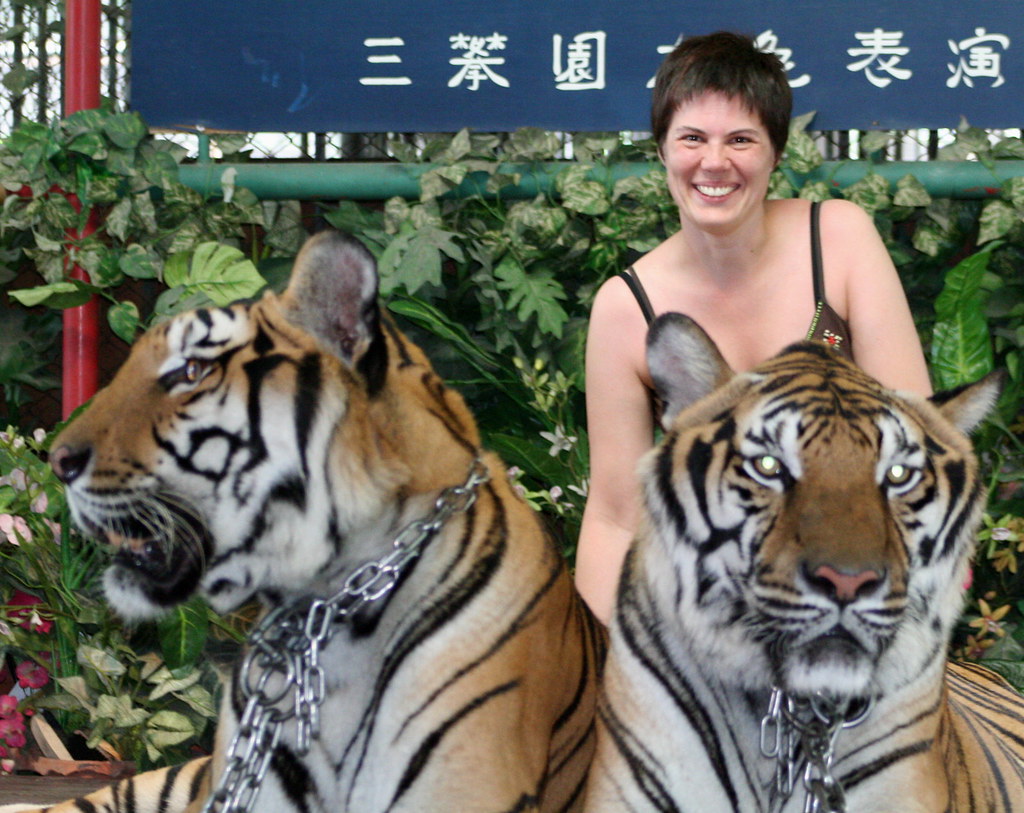
The tigers and me. At a zoo of sorts in Thailand -- it was billed as a Crocodile Farm, but there were two gorgeous tigers and some elephants that made the crocodiles seem boring: photo by Roberta Taylor, 9 May 2008.
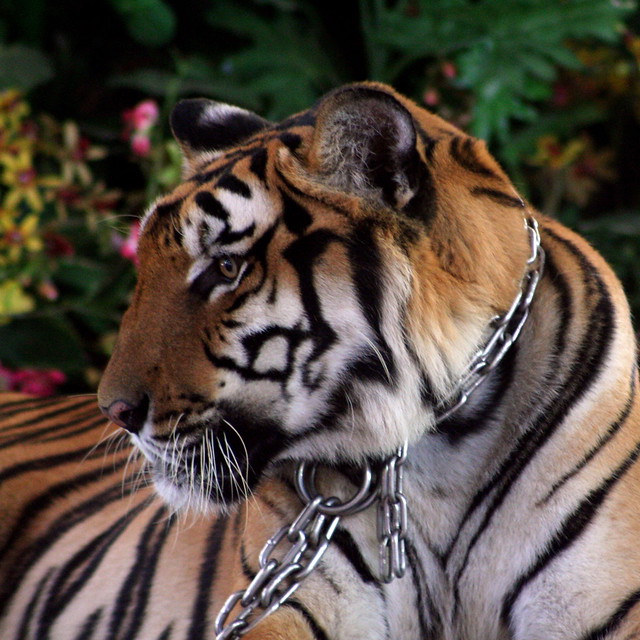
Beautiful [Captive tiger, Thailand]: photo by Roberta Taylor, 9 May 2008
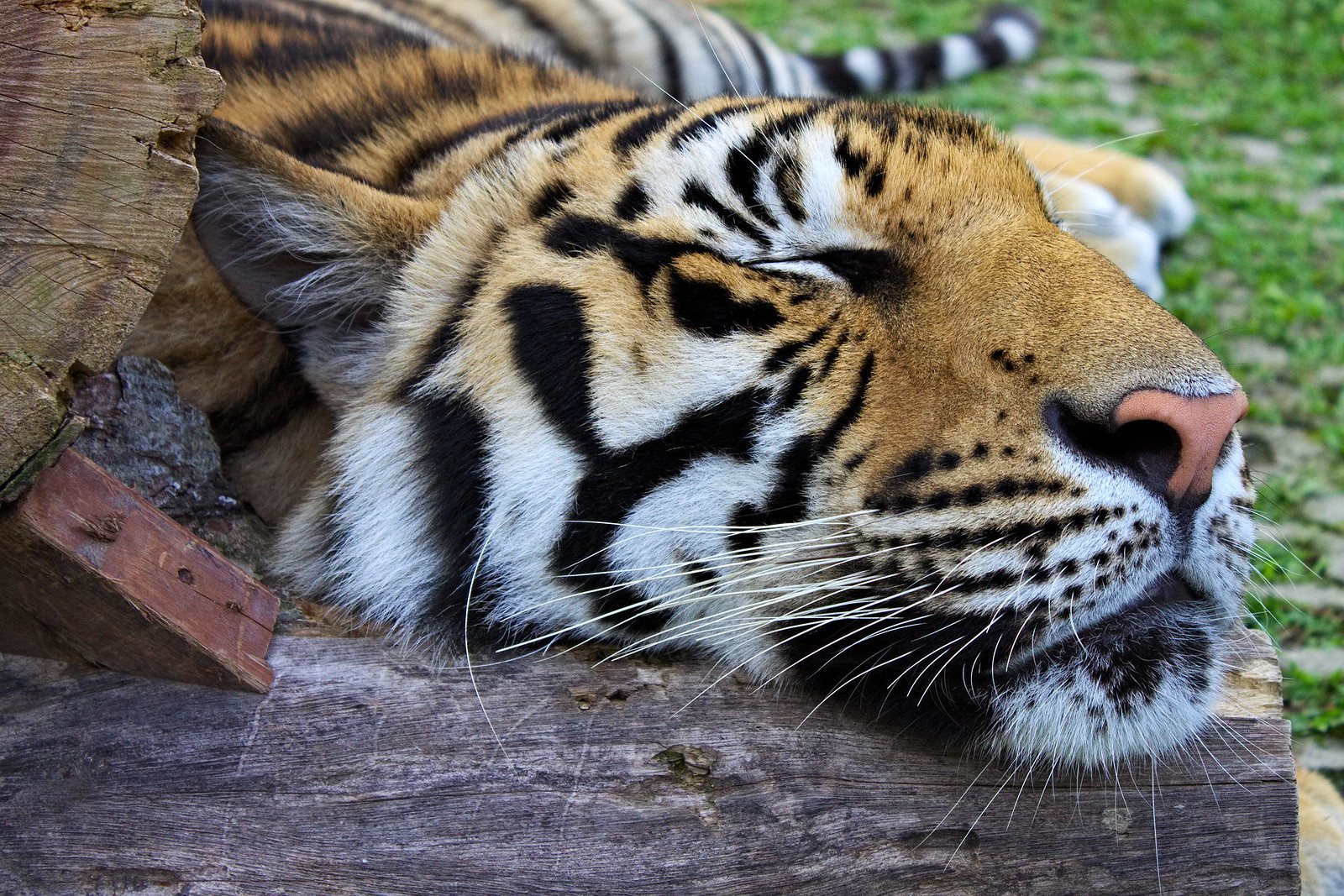
Tiger, Tiger Kingdom, Phuket, Thailand: photo by Nicholas Vollmer, 14 January 2014

sedated tiger, Chiang Mai, Thailand: photo by garycycles7, 3 May 2011
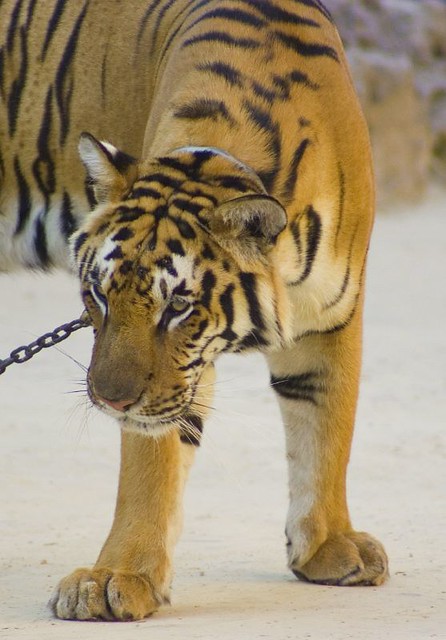
Tiger Temple 3 [Kanchanaburi Province, Thailand]: photo by audrey_sel, 2 January 2007
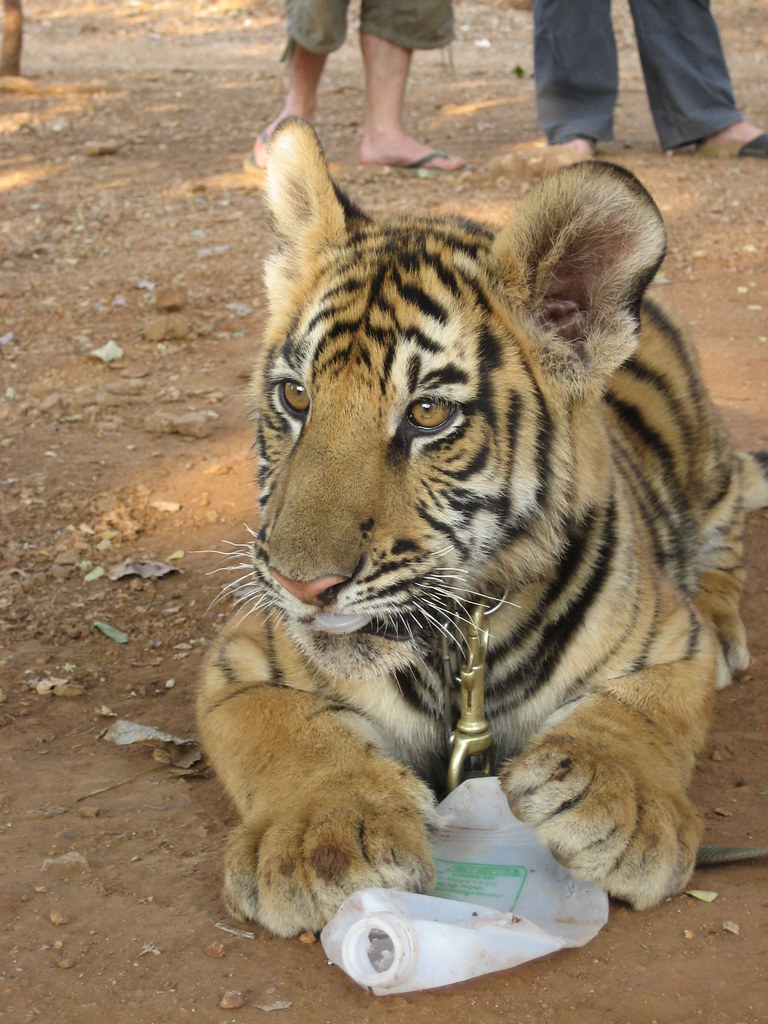
Baby Tiger (Tiger Temple, Kanchanaburi Province, Thailand): photo by rogoyski, 3 January 2008

Tiger Temple, Kanchanaburi Province, Thailand: photo by SB, 21 November 2005
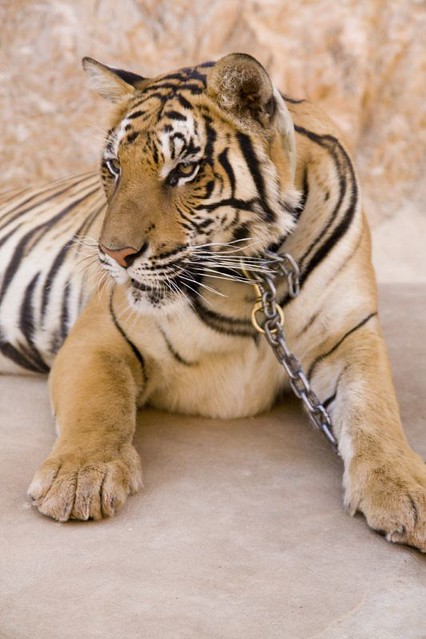
Tiger Temple 7 [Kanchanaburi Province, Thailand]: photo by audrey_sel, 2 January 2007
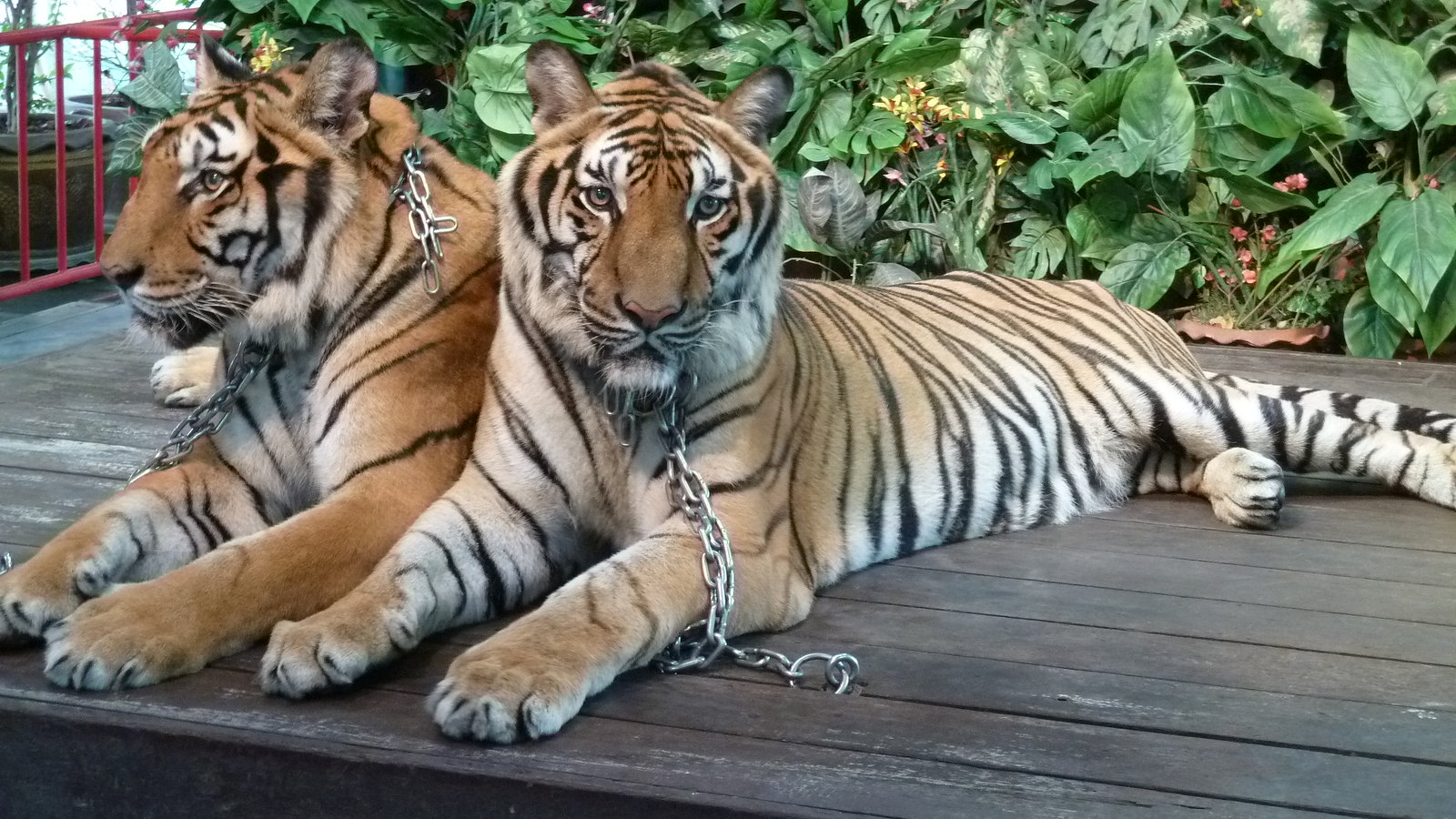

outfits: photo by John Henry Mostyn, 3 June 2005

Pingyao Bicycle. Ancient City of Pingyao, Shanxi, China.: photo by ccdoh1, 16 April 2012
III...Tigerish

Epic Fireworks -- Hide It From the Wife [Batley, UK]: photo by Todd Lappin, 31 October 2007

Tigerskin star with band, gallery opening, Seattle: photo by Wonderlane, 9 December 2011

Untitled [Brick Lane, Shoreditch, London]: photo by Nick Anderson, 31 August 2008

The Way of the Tiger [Landen, Vlaams Brabant, Belgium]: photo by Yves Salmon, 24 December 2007habeebee, 24 July 2012

tiger, tiger [Psiri, Athens, Attica]: photo by René Mouton, 26 January 2015

Food for Thought. Tigerskin performer in discussion over lunch at event in Sydney: photo by Louis Allen, 22 August 2010

Tiger Rag. MSU museum's annual Darwin Discovery Day [East Lansing, Michigan]: photo by Billl Harrison, 8 February 2015

Found photo. I am thinking hotel. California? Nevada? [c. 1970s]: photo by habeebee, 24 July 2012

Cans and Tiger Skin Cap. Seen at London's Trafalgar Square.: photo by Garry Knight, 30 August 2014
Handsome Petir is ready to be released into the wild #HarimauSumatera #TamblingWildLife #sumatrantiger: image via Jaringan Pulsa @jaringanpulsa, 27 February 2015
IV...Is there a future for Handsome Petir and his kind?
Mari kita jaga mereka #HarimauSumateraTWNC #HarimauSumatera #TamblingWildLife #SUMATRANTIGER: image via nansusanti1 @ nansusanti1, 2 March 2015
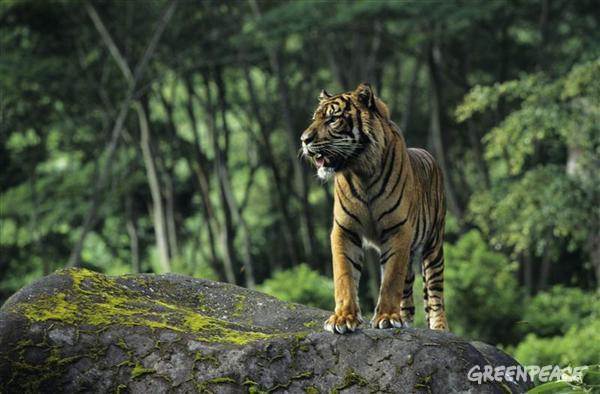
sayangi fauna #TamblingWildLife #HarimauSumatera #SumatranTiger: image via Tulusma Hutasoit @TulusmaH, 2 March 2015
Save them! #HarimauSumateraTWNC #HarimauSumatera #TamblingWildLife#SumatranTiger: image via ahmadhai @hadi_AhmadAshor, 2 March 2015
menyayangi binatang liar #TamblingWildLife #HarimauSumatera #SumatranTiger: image via Dwi Rochadi, 2 March 2015
Save Sumatera Tigers... #TamblingWildLife #HarimauSumatera #SumatranTiger: image via feny lim @fenylimfeny, 2 March 2015
#Deforestation Drives 80% Of #Indonesia's Emissions, Making It World's 5th Biggest Emitter: image via Assaad Razzouk @Assaad Razzouk, 8 May 2015

Tiger (Panthera tigris), Frankfurt Zoo: photo by Moni Sertel, 15 April 2009











